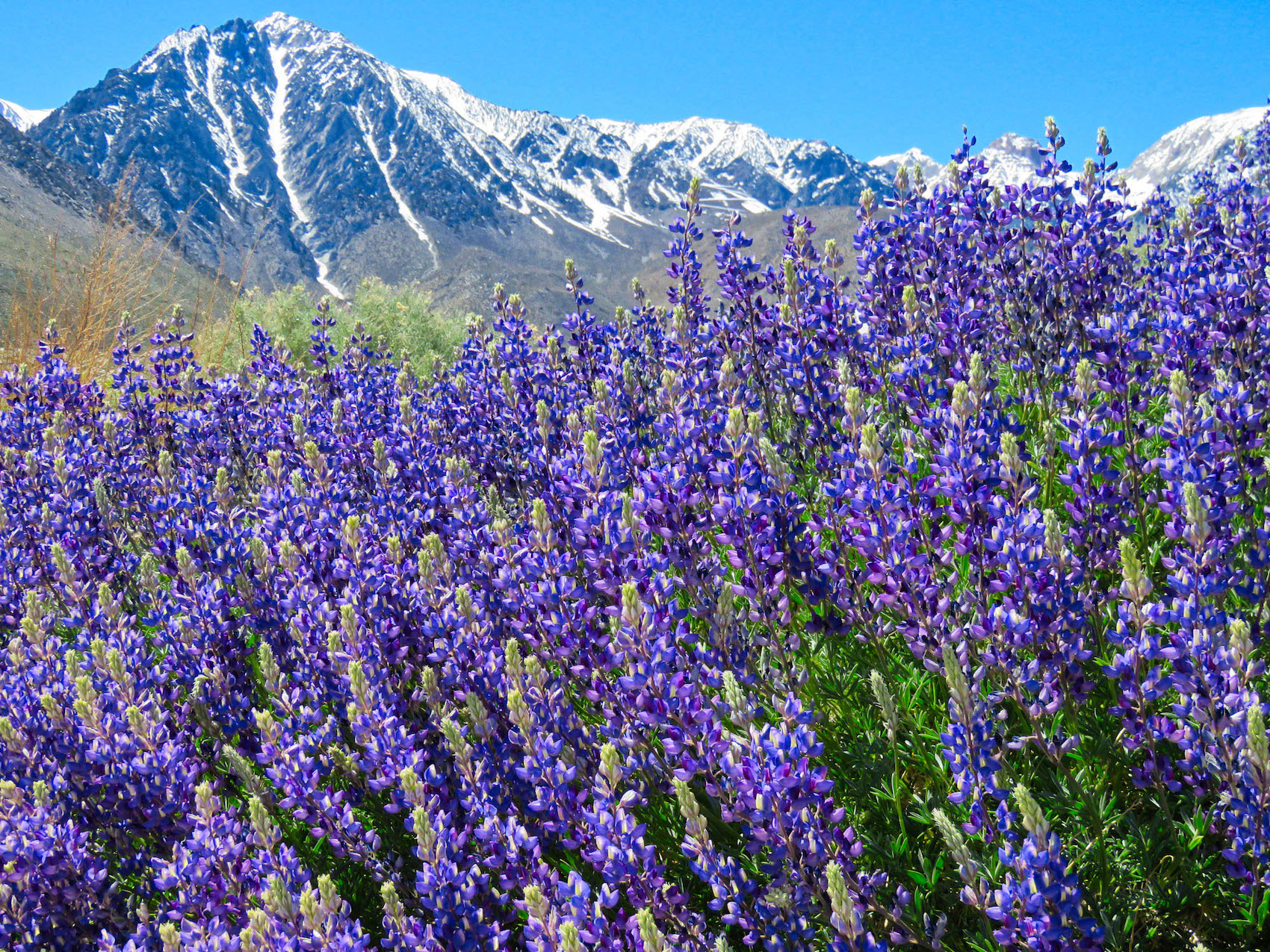Crimson Columbine. Desert Evening Primrose. Sierra Tiger Lily. Honestly speaking, wildflowers might have the coolest names of any living organism on the planet. And if you begin the process of identifying what they are, the stories behind them are even more interesting. To help you start the journey, here’s a few of the easier to spot flowers in California High Sierra.
Great Activity For All Ages
Identifying wildflowers is the perfect activity to help spark a bit more fun out on a hike. Just like a treasure hunt, your kids will be focused & excited at how many they can find. Is it two or three? Heck, why not give them a reward with some ice cream if they can find all five!
Lupine

Lupinus or commonly known as lupin or lupine, it’s believed the name comes from the Latin word lupinus meaning “wolfish.” At the time, they believed the plant ravenously exhausted the soil. You’ll find this common wildflower up and down the Sierra Nevada including Division Creek near the town of Bishop.
Indian Paintbrush

Growing up to waist high, the Castilleja miniata or as it’s commonly referred to as the Indian Paintbrush got its moniker from a children’s book by Tommie dePaola based on a legend. A young Indian boy had a vision that he’d paint the colors of the sunset & become known among his people. He asks the Great Spirit for help & finds brushes on top of a hill filled with bright oranges, reds, and pinks. After he was done, he placed the brushes on the hill, and they took root creating the flower we know today.
For more wildflowers, animals, and plants to keep any eye out for on your hikes surrounding Truckee, check out Visit Truckee-Tahoe’s wildlife and flowers homepage.
Wild Iris

Taking its name from the Greek word for rainbow, these flowers fit the bill for being beautiful. Although there are over 300 species of them on the globe, the Sierra Iris is a native version. Its habitat starts around 2,000 feet and goes all the way up to 6,000 feet in elevation. Its favorite growing areas are moist places. You many find it under firs & pines and even in sunny, moist meadows like the Bridgeport Valley in Mono County.
To find out more about Bridgeport Valley and other wildflower hotspots, visit the Mono County Wildflowers homepage.
Fireweed

As the name alludes, the Fireweed is a sun-loving plant that’s one of the first to pop up in a burned-out forest location or other disturbed topography. As such, they typically grow in dense clusters making for a colorful display of bright magenta. Keep your eyes open for these unique eastern Sierra wildflowers in the Red’s Meadow area along the Rainbow Falls trail near Mammoth. These flowers normally grow four to six feet in height and occasionally tower up to 9 feet.
Mule Ears

Although not a true wildflower but rather a flowering plant. The fairly large leaves of this stout plant resemble the ears of the bovine it’s named after. Similar to the Fireweed, it’s one of the first to colonize growing in open grassy areas or recently burned sites. If you’re on a hike to one of the many wildflower meadows in the Tahoe Basin, there’s a VERY good chance you’ll see A LOT of mule ears.
Most places in the world have a period that lasts only a few weeks to see Mother Nature’s display. The High Sierra is very fortunate in its topography making for a season that can start in March and last sometimes into August. Like Hansel & Gretel, all you need to do to see flowers in California High Sierra is to follow the snowmelt. Start low in the early part of the season and climb in elevation as the season wanes.
Author: Alex Silgalis
Alex Silgalis is an outdoors travel writer who enjoys snowboarding, mountain biking, or having a cold one from a local mountain brewery. See more of Alex’s work at https://localfreshies.com
More Trip Ideas


Leave a Reply